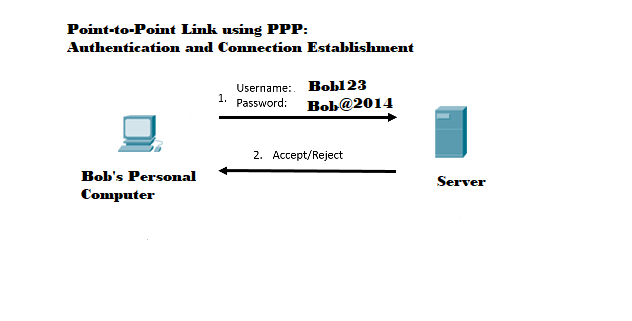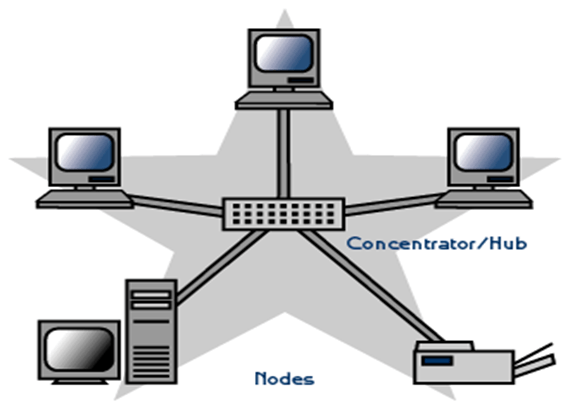Difference Between Point-to-Point Link and star Topology Network
This article will help provide you a detailed comparison between point-to-point and star topology networks. Before comparing these two concepts let us understand what are point-to-point and star topology networks.
What is point-to-point link?
A point-to-point link is a communication connection that enables two devices to communicate directly with each other without any intermediate devices or nodes involved. It is often referred to as a dedicated connection, as the communication link is reserved exclusively for the two devices.
Point-to-point links can be established in various ways, including physical cables, wireless connections, or satellite links. Physical point-to-point links use a variety of cable types, such as copper wires, fibre optic cables, or coaxial cables, to connect the two devices. This type of link provides a direct electrical or optical connection between the devices, allowing for data to be transmitted quickly and securely.
Wireless point-to-point links, on the other hand, use radio waves or other wireless signals to connect the two devices over a short or long distance. This type of link is often used in outdoor environments where running cables is impractical, such as in wireless backhaul networks for cellular base stations, or in point-to-point wireless links between buildings.
Satellite links, which are commonly used in remote areas, use radio signals to transmit data between two points on the ground and a satellite in orbit. This type of link provides a reliable and efficient way to connect devices in areas where it may be difficult or impossible to establish a physical or wireless connection.
Point-to-point links are commonly used in various applications, such as telecommunications, video conferencing, and internet connections. They provide a secure and direct connection between devices, which helps to reduce latency, improve reliability, and increase network capacity. Overall, point-to-point links are a vital component of modern communication networks, enabling devices to communicate directly with each other securely and efficiently.

What is star topology network?
In this type of topology, a networking device is located at the centre all the remaining devices are connected thereby forming a hub. This hub acts as a central point of control for the network and provides a means for devices to communicate with one another. In this topology, each device on the network has its own dedicated connection to the central hub or switch, which is known as a point-to-point connection. The hub is responsible for routing data between devices and managing the flow of traffic on the network.
One of the primary advantages of a star topology is that it provides a reliable and efficient way to connect multiple devices on a network. If a single device fails, the rest of the network will continue to function normally, as each device has its own dedicated connection to the hub or switch. This makes it an ideal topology for environments where reliability is critical, such as in businesses, schools, and hospitals.
Adding new devices to the network is as simple as connecting them to the central hub or switch, and the hub can be configured to manage network traffic and security policies. This makes it an ideal topology for smaller networks that do not require complex configurations.
The main disadvantage of a star topology is it very expensive to implement practically. Each device on the network requires its own dedicated connection to the central hub or switch, which can require additional cabling and equipment. Additionally, if the central hub or switch fails, the entire network will be affected, which can result in downtime and lost productivity.
Overall, a star topology is a popular choice for smaller networks because of its simple design and reliable performance. It is commonly used in home networks, small offices, and classrooms, and it provides a reliable and efficient way to connect multiple devices on a network.

Differences between point-to-point link and star topology network
| Point-to-point link | Star topology network |
| A direct communication link between two devices. | Devices are connected to a central hub or switch. |
| Only two devices can communicate at a time. | Multiple devices can communicate simultaneously. |
| Uses less cabling compared to other topologies. | Requires more cabling as each device needs a dedicated connection to the central hub or switch. |
| Offers a dedicated, private connection. | Offers shared connections between devices. |
| Data transmission is faster as there is no sharing of bandwidth. | Data transmission may be slower due to sharing of bandwidth. |
| Simple to configure and troubleshoot. | Configuration can be complex, but troubleshooting is easier. |
| Suitable for small networks with only two devices. | Suitable for larger networks with many devices. |
| Point-to-point links are less secure since there is no central hub to control access. | The central hub provides a point of control for managing access and security. |
| Scalability is limited due to its two-device limitation. | Scalability is easier as additional devices can be added to the central hub or switch. |
| Provides a direct connection for real-time applications such as video conferencing | May not be suitable for real-time applications due to shared bandwidth. |
| Failure of one device does not affect other devices on the network. | Failure of the central hub or switch can affect the entire network. |
| Lower cost due to less cabling and simpler configuration. | Higher cost due to more cabling and additional equipment for the central hub or switch. |
This is all about the comparison between point-to-point link and star topology network. Hope you understood this topic.